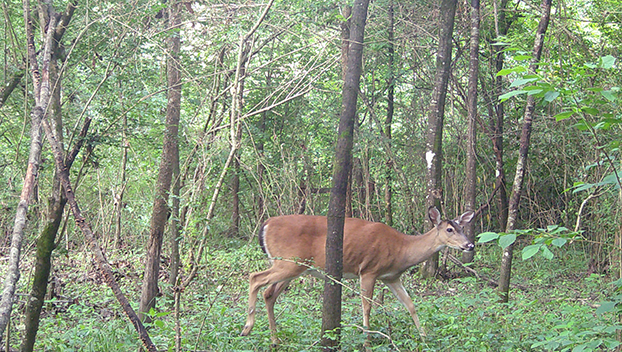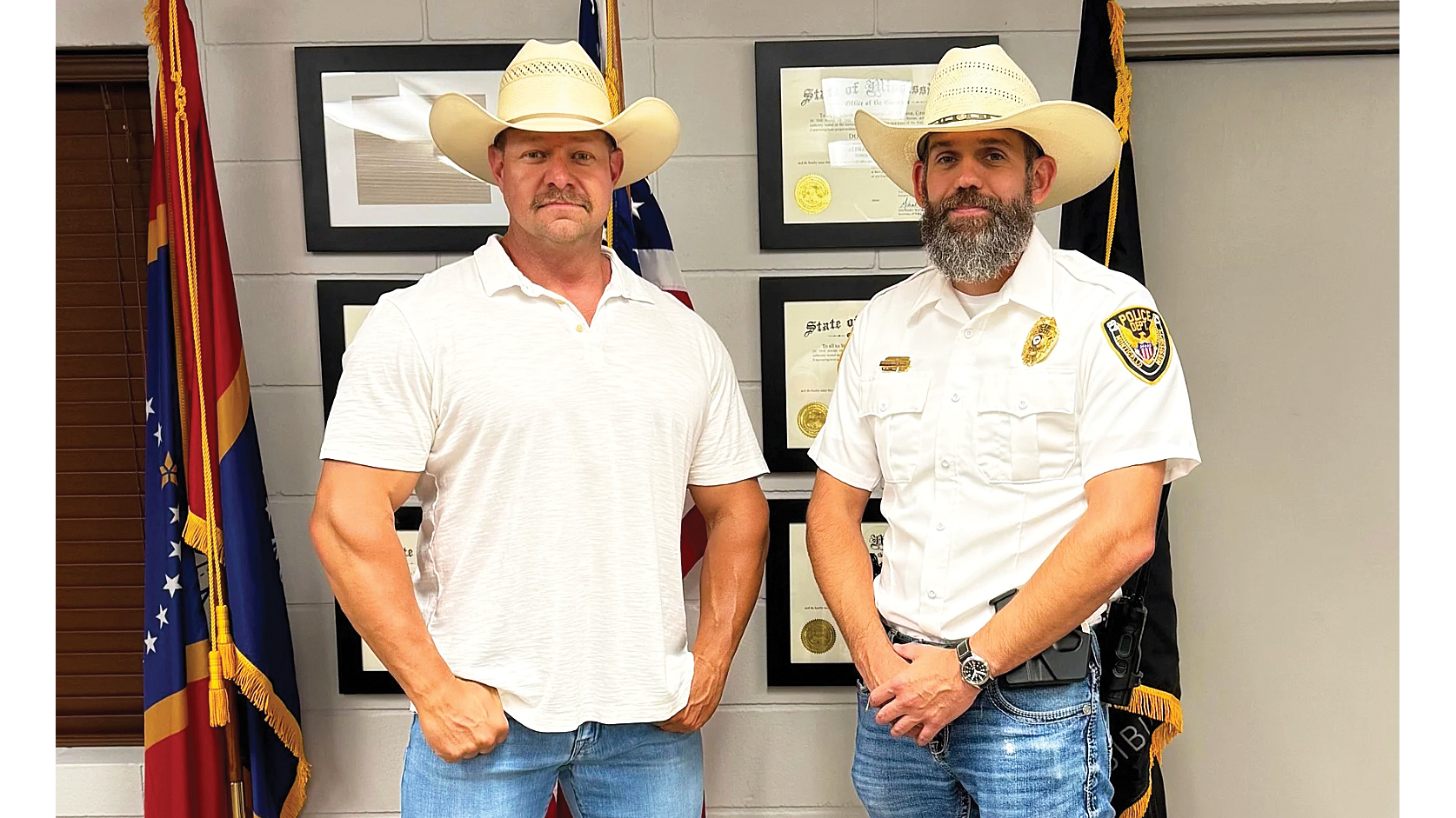Five ways to prep for hunting season in the heat
Published 11:38 am Thursday, June 29, 2023

- Here a deer walks down a path from a creek to a bedding area. Creek crossings make great trail camera survey spots this time of year. (Hunter Cloud | The Daily Leader)
BROOKHAVEN — Temperatures are forecast to hit the upper 90s this week and heat indexes are supposed to be between 110 to 115 degrees increasing the risk of heat stroke with prolonged outdoor activity. Time is also running out as deer season quickly approaches with archery only, buck only velvet season opening on September 15 and bow season opening September 30.
Research by the National Deer Association has shown that deer core areas and home ranges shrink in the summer months. Heat and increased food availability are two factors in their limited movement this time of year. Forbs and browse are still high quality food for now and like human’s, deer tend to find cool places and relax in the heat.
Despite the heat and short amount of time there are still ways you can get ready for deer season without putting yourself in medical danger. Here are five activities you should be able to safely do as long as you remain hydrated and take breaks.
Make early morning moves
Sunrise is about 6 a.m. this time of year which means the first light is 5:30 a.m. Temperatures are at their lowest at that time of day so it is the best time to take on moving, placing or inspecting tree stands, which can be a strenuous activity.
When you are working in a tree, make sure you have on a Tree Stand Safety harness and stay tethered to the tree to prevent injury or even death from a fall. Inspect your stand to ensure the chains or ratchet straps are still good.
Summer is the best time to move or place a new stand but make sure you do so based on deer behavior in deer season not this time of year. Deer movements and patterns will change as the season progresses and more hunting pressure is felt. It is best to get a stand set up now so you aren’t bothering deer by moving a noisy stand during the hunting season.
Mid-morning thinning
After you stop for breakfast, coffee and plenty of water it is time to grab your chopping ax or chainsaw and hit the woods to make timber stand improvements. It is best to start this around mid morning from 10 a.m. to about 1 p.m. As the sun moves through the sky you will likely remain in the shade and you can see which areas need thinning for increased direct sunlight to the ground.
One way to help encourage new growth going into the summer stress period, when does are lactating and bucks are growing antlers, is to chop down or cut down undesirable trees creating stump sprouts. This practice will also allow more light to get down to the forest floor which stimulates new growth.
Mississippi Forestry Commission has a tree identification app which can help you learn the wildlife uses of different trees. Summer is a great time to identify which mast producing trees such as oaks, pecans, hickories, persimmon and cherry trees are producing mast, fruit or acorns. This can help inform hunting decisions but also help you select which trees to keep.
Find a creek
The heat of the day is typically from 2p.m. to 5 p.m. and the best place to cool off and still get work done is walking down to a creek or creek bottom. Ever noticed how turkeys and deer go to these bodies of water during the heat of the day when you are hunting them, it’s because they are often the coolest spot on the landscape to beat the heat especially if it is well shaded.
One way you can still actively prepare for deer season is by making note of any deer crossings and setting up trail cameras for a camera survey. You can also plant millet in well drained areas in preparation for the fall as an additional food source for deer, turkeys and ducks.
Creeks this time of year should be lower than they will be in the winter months. If you like to duck hunt, the summer is a great time to set up an area to wade into and wait for wood ducks. Landowners can also remove any debris which might impede movement in the water.
Remove any midstory trees which shade out vegetation on the bank. Ducks often use bank vegetation as cover and deer will browse on the growth.
Late evening planting
From about 5 p.m. to 7 p.m. it is a perfect time to plant a food plot or prepare an area for one. Temperatures should be dropping by this point in the day and your seeds won’t be scorched by a blazing sun. Seeds need moisture in the soil to germinate.
If you don’t have a tractor, all you need is a kaiser blade, a rake and a garden hoe or shovel to break up the soil to prepare for planting. While it is too late to plant legumes, hunters and habitat managers can still plant millet in preparation for migratory bird season.
Browntop millet takes about 70 days to mature and produce a seed head which is eaten by birds. If you plant browntop millet now it should be ready in time for early September Goose season and dove season.
It is never too late to start preparation for your cool season food plots. Work to clear an area with an herbicide or mechanical disturbance such as disking to get down to bare dirt. Clover, oats or wheat and brassicas are great for cool season plots and provide a bugging area for turkeys in the spring.
Target practice
Summer is a great time to make sure your rifle is sighted in or knock the rust off of your archery form. Shooting takes little physical activity and is the most crucial piece to hunting. You can manage your habitat, plant food plots, scout for deer and get yourself in the right place but if you are not confident taking the shot then you can miss that big buck.
Archery shooting is best to start out at 30 yards and get consistently hitting your target area and then work back five or 10 yards until you are confident in your shot. A good way to practice is to not use a rangefinder but try to visualize how far you are and walk it off. This will come in handy during bow season when that group of deer appears out of nowhere.
Adrenaline can make a bow hunter’s hand unsteady but one way to simulate the blood rushing through your veins is to do some jumping jacks, run around and then try to calm down and take the shot.
Archery is all muscle memory as is shooting a rifle and shotgun. Set aside about 30 minutes a day to practice with your bow when you get home from work. Similarly, July is a great time to practice calling for ducks, geese or deer. The more practice you have the more natural you will sound when those canada geese or blue-winged teal show up in September.





